The timeless crafts of Bukhara
Nestled in the heart of Uzbekistan, the ancient city of Bukhara feels like stepping into a museum, where every corner you turn shows you tales of the past. As a crucial trading hub along the Silk Road, Bukhara's rich history is reflected in its artisanal crafts. Each of these iconic crafts is a testament to the city’s rich heritage and the amazing skill of its artisans.
The origins of arts and crafts in Uzbekistan can be traced back centuries. Today, modern craftsmen and masters honor these traditions of decorative and applied art, whilst developing new ideas and perfecting their techniques. Their works showcase a variety of artistic forms, a wealth of creative imagination, and technical skills passed down from generation to generation.
In the old caravan city of Bukhara, merchants still sell their goods today under the ancient trading domes. At its peak as a bustling trade centre, Bukhara boasted five grand bazaars, known as toks. These vaulted stone structures stood at the intersections of the various trade routes. Their towering arched entrances were designed to accommodate laden pack camels, and each bazaar specialised in a particular trade.
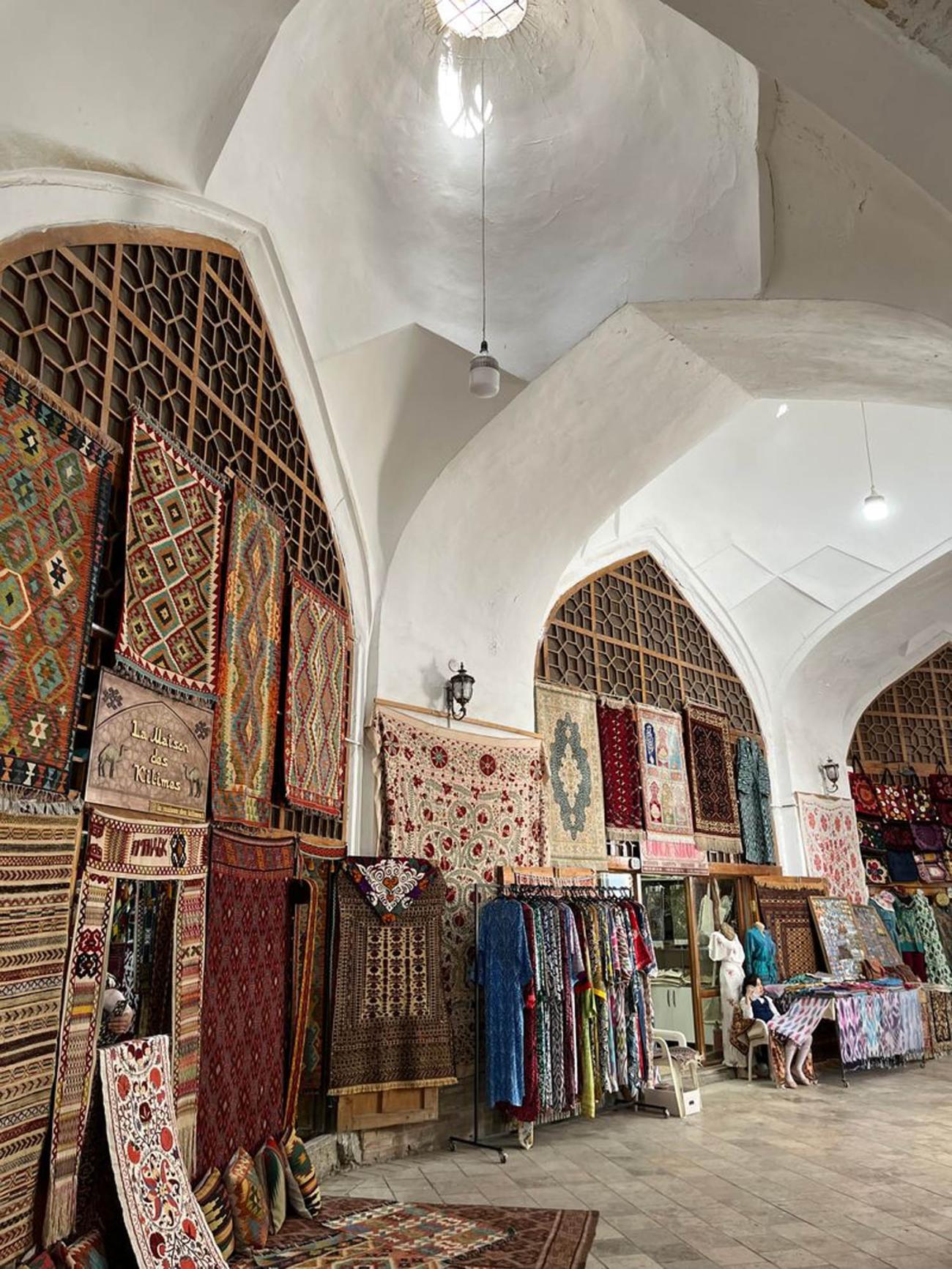
Today, three of these bazaars remain, preserving the essence of their historic glory. The Tok-i-Tilpak Furushon, the central bazaar of the three, features the most intricate construction. Its irregular corners and arches once sheltered stalls displaying an array of headgear: gold-embroidered hats, colourful skull caps, and fur hats for the cold desert winters. Now, like its counterparts to the north and south, it hosts craft and souvenir stalls, including those of blacksmiths.
Just outside of the Tok-i-Tilpak Furushon, there was a blacksmith hard at work at his anvil. Bukhara is renowned for its metalwork. Within the dome, several stalls are run by blacksmiths, showcasing traditional Bukharan scissors shaped like storks and other birds, which I of course had to buy. Their master is considered the 6th representative of the dynasty of blacksmiths, and now his son (the 7th representative) has already started working alongside his father.
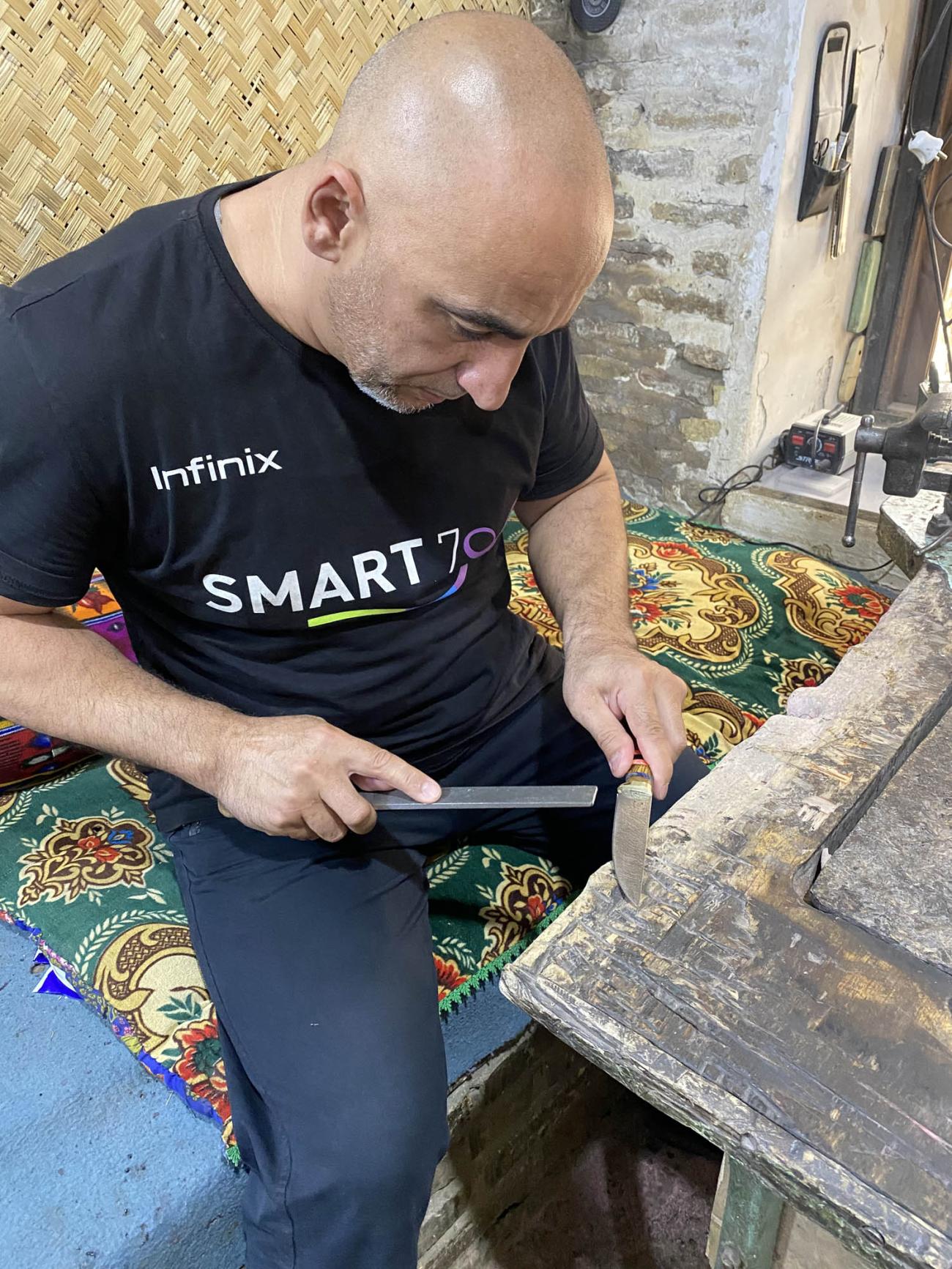
To the north stands the Tok-i-Zargaron, or ‘Jewellers’ Trading Dome’, the largest of the three remaining bazaars. Built in 1570, this grand structure was once the epicentre for trading gold, precious metals, gems, and coral. Today, it hosts a variety of stalls selling tourist souvenirs and spices. Despite its modern use, it's easy to picture the bustling market of the past.
This is where I met Firuz, a miniature painter. Miniature painting is a revered art form that has flourished for centuries, deeply rooted in Persian traditions. These intricate artworks, often created on small canvases, capture historical events, literary scenes, and everyday life with detail and vibrant colours. Artists use fine brushes and natural pigments to produce delicate, highly detailed scenes. Each miniature painting not only reflects Bukhara’s rich cultural heritage but also showcases the artist’s skill and imaginative storytelling.
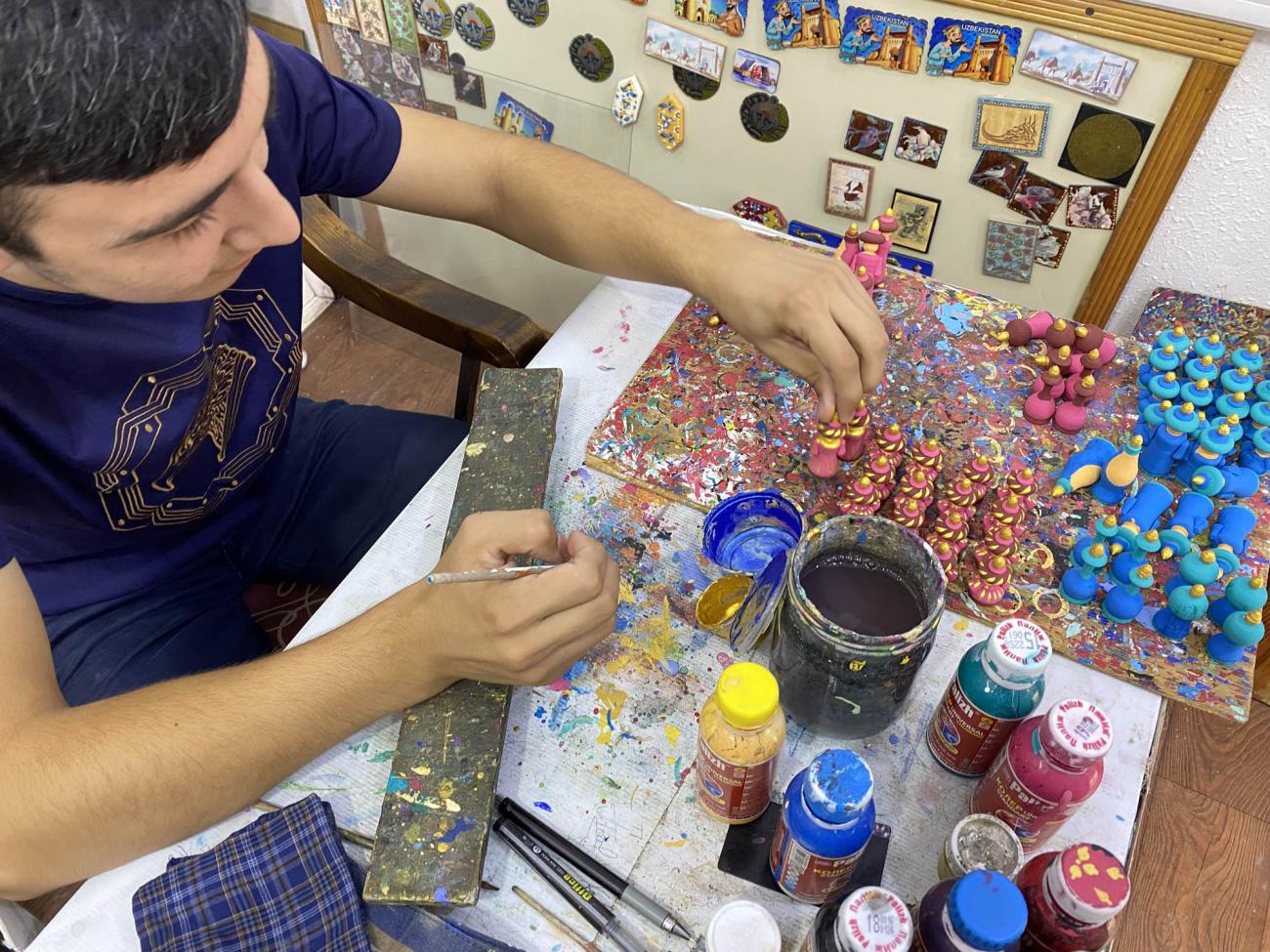
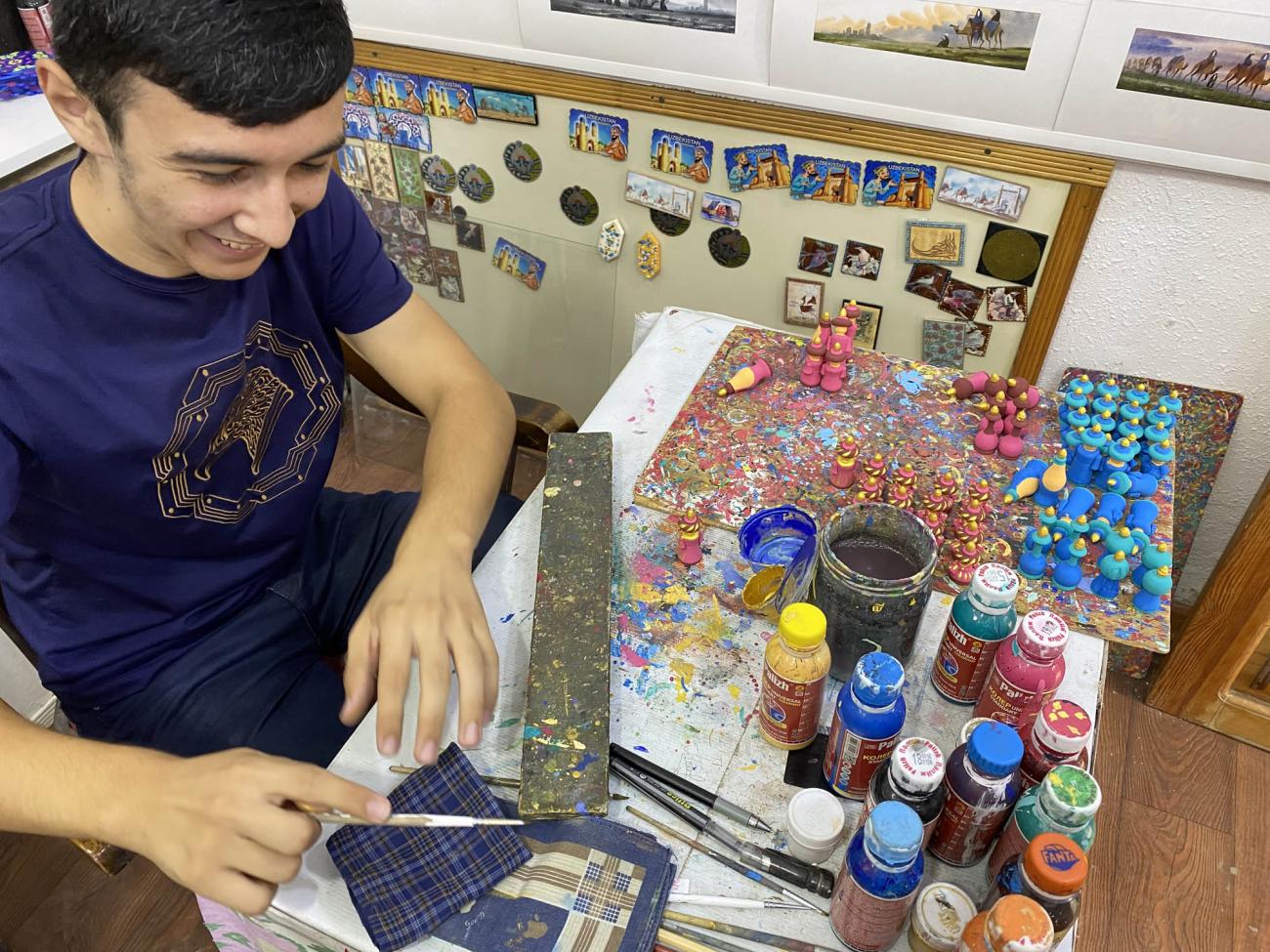
Leaving the Toks and heading towards the main street, I found the Bukhara Artisan Development Centre It is a thriving hub that celebrates and preserves the rich cultural and artistic traditions of this Central Asian region. The centre serves as a critical focal point for the exploration and revitalisation of Bukhara's world-renowned crafts, such as carpet weaving, gold embroidery, ceramics, and wood carving.
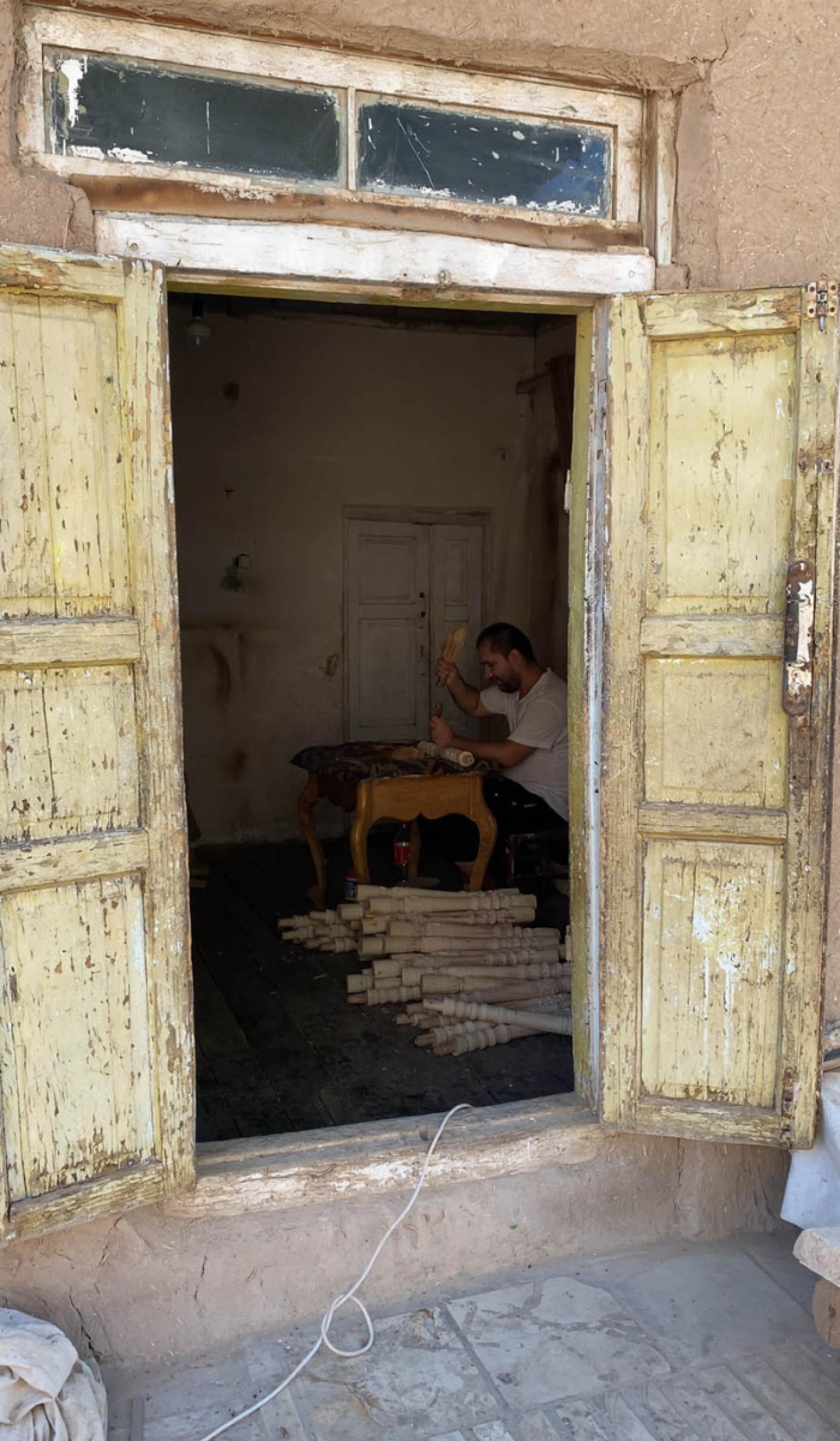
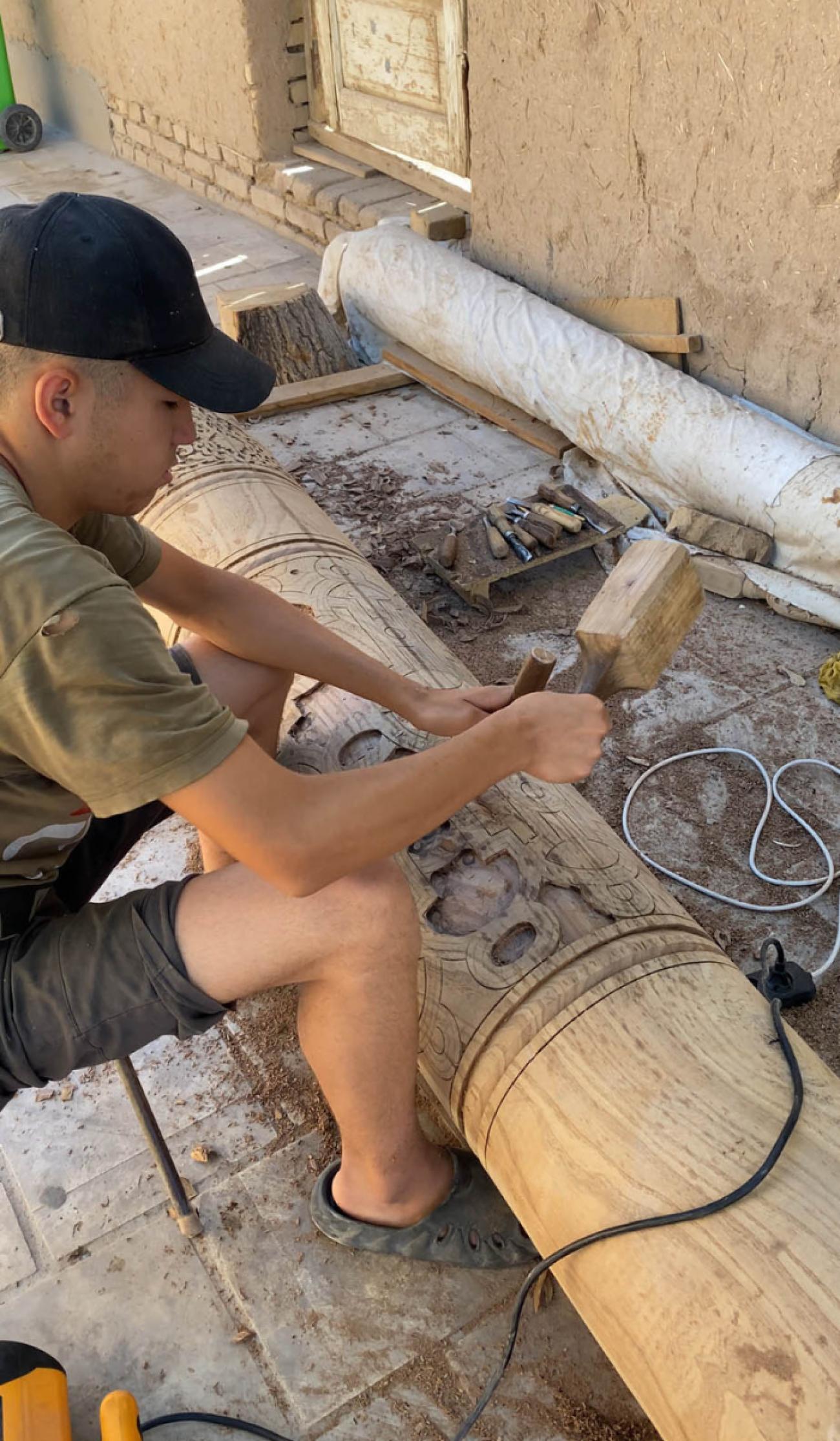
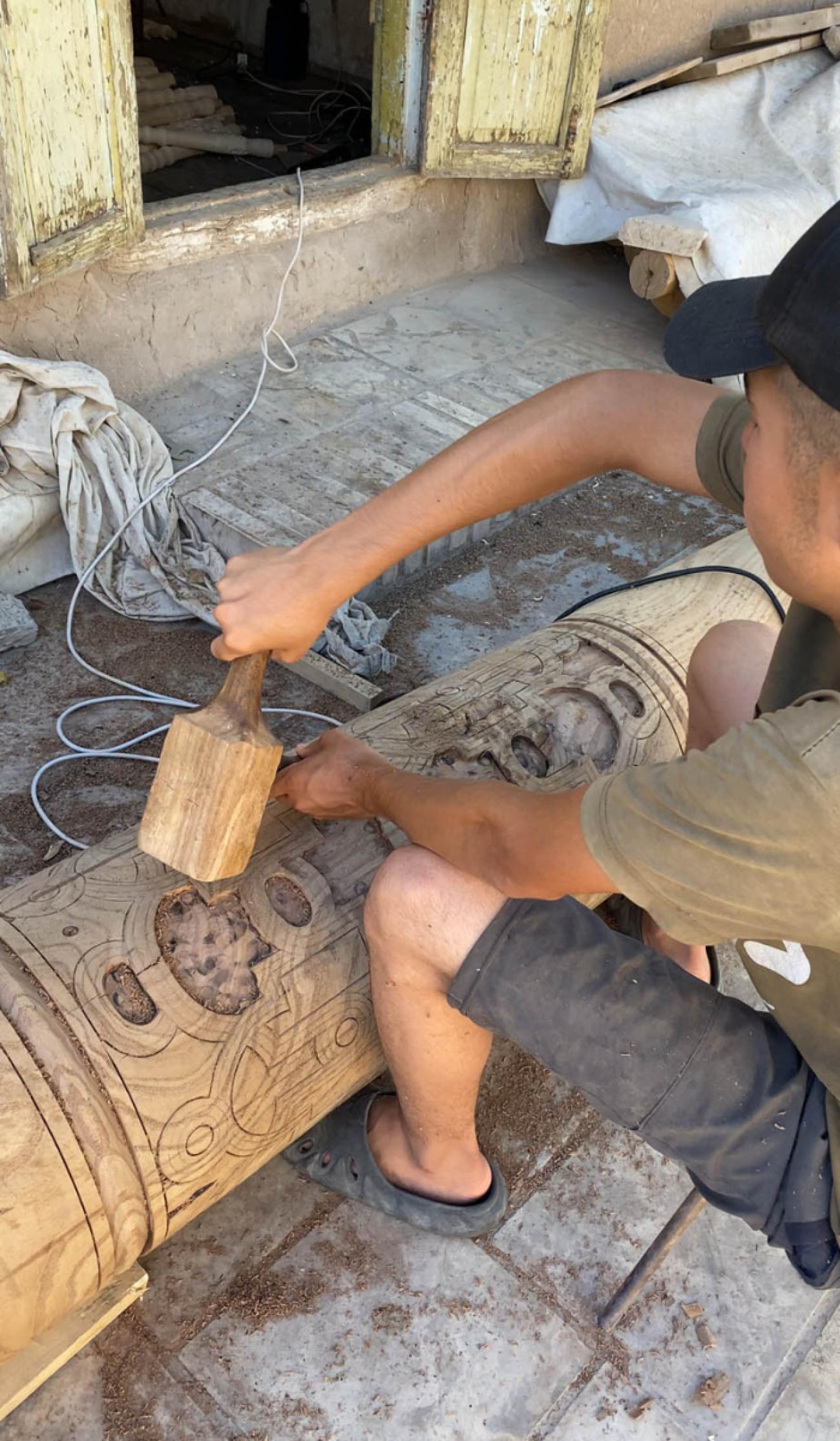
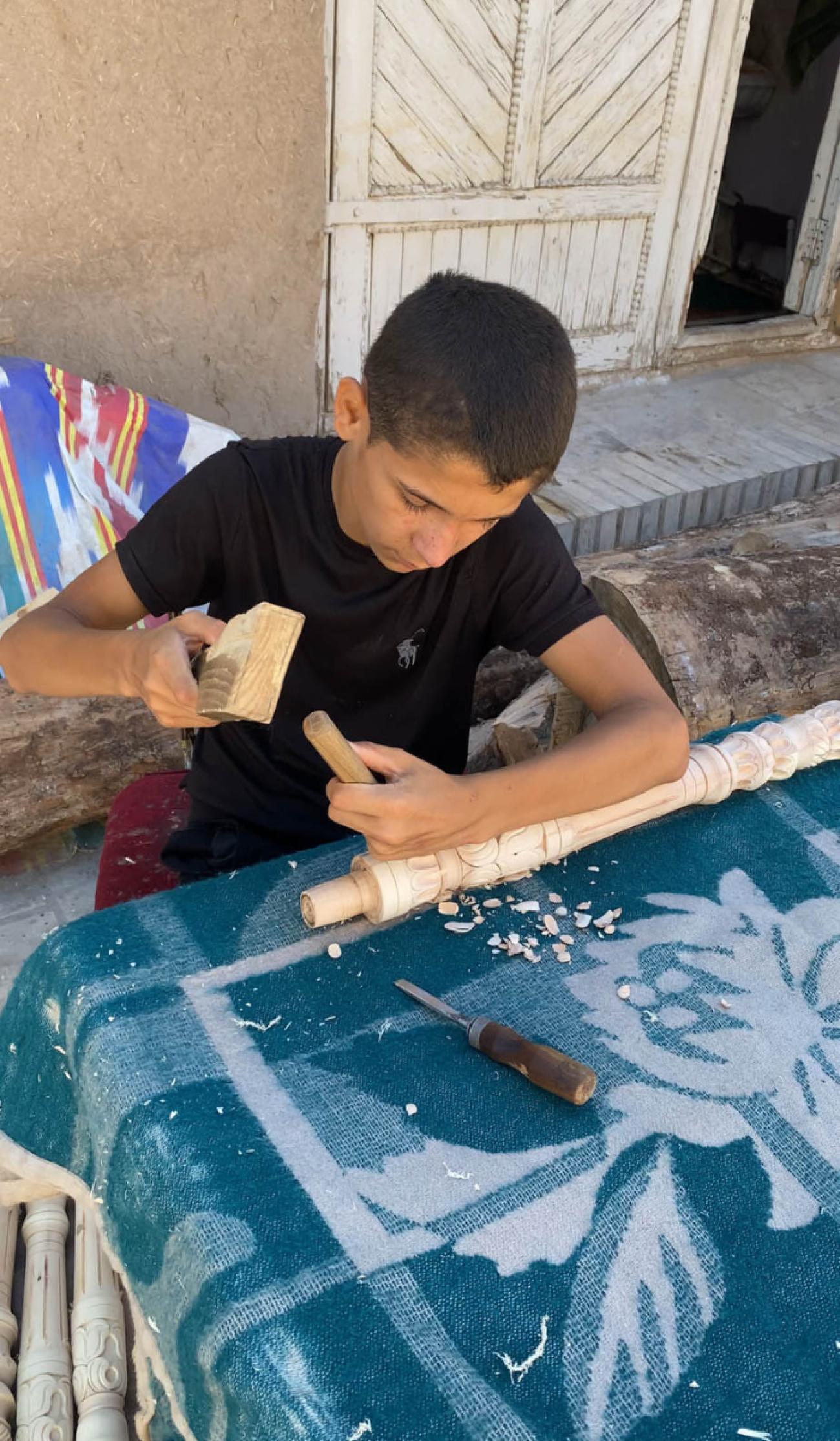

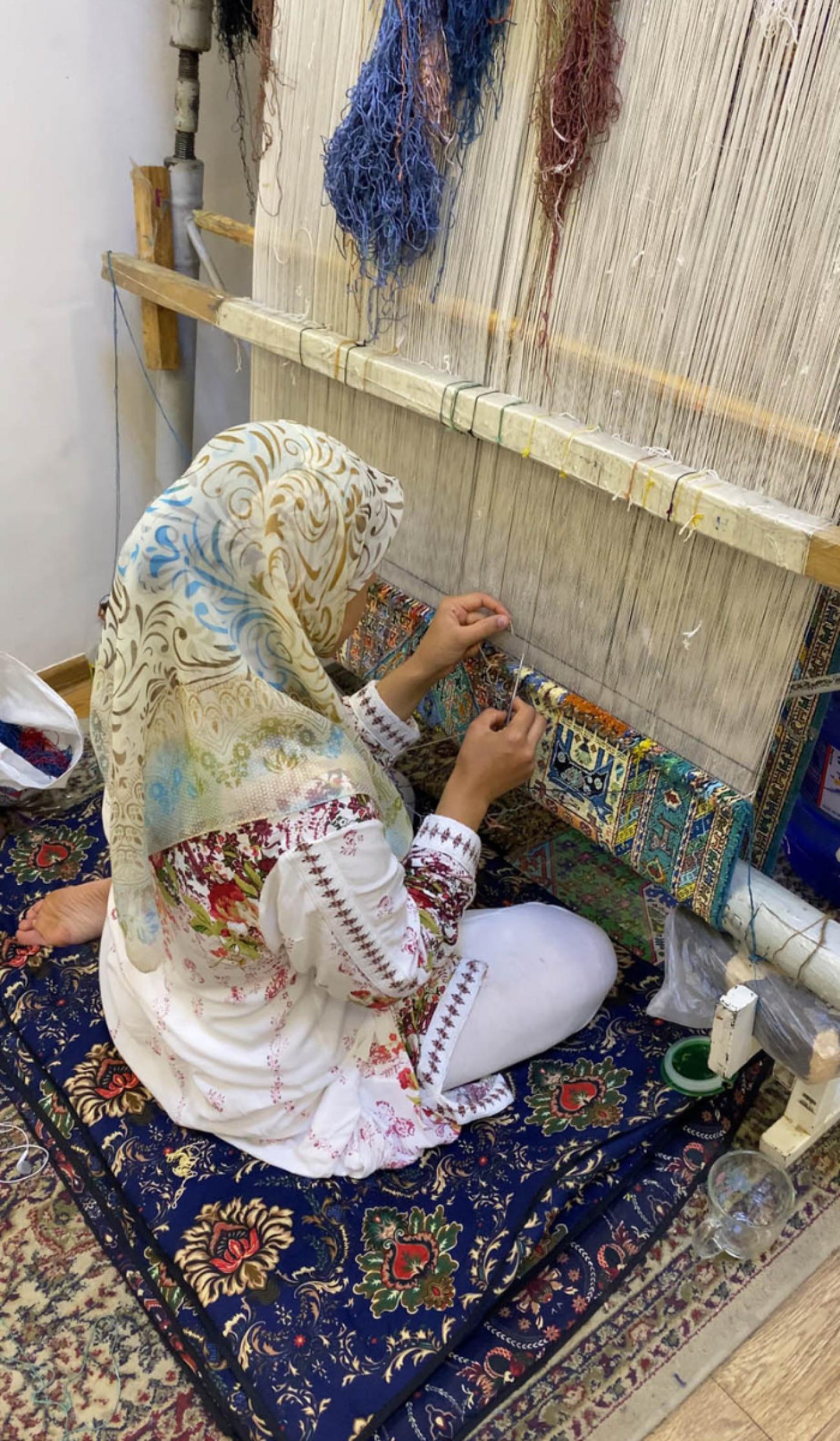
The centre offers immersive experiences for tourists and visitors who are keen to understand and appreciate the local art scene. Visitors can explore the vast array of handicrafts, observe artisans at work, or even participate in hands-on workshops to experience the making of these crafts first-hand. It was here that I was shown the work of the toreutics, one of the oldest crafts you will find in Uzbekistan - the art of working with metal to create intricate engravings. Renowned for their exquisite craftsmanship, Uzbek artisans skillfully manipulate precious metals such as gold, silver, and bronze to produce stunning decorative items, jewellery, and ceremonial artefacts, characterized by elaborate designs often inspired by nature, geometric patterns, and traditional motifs.
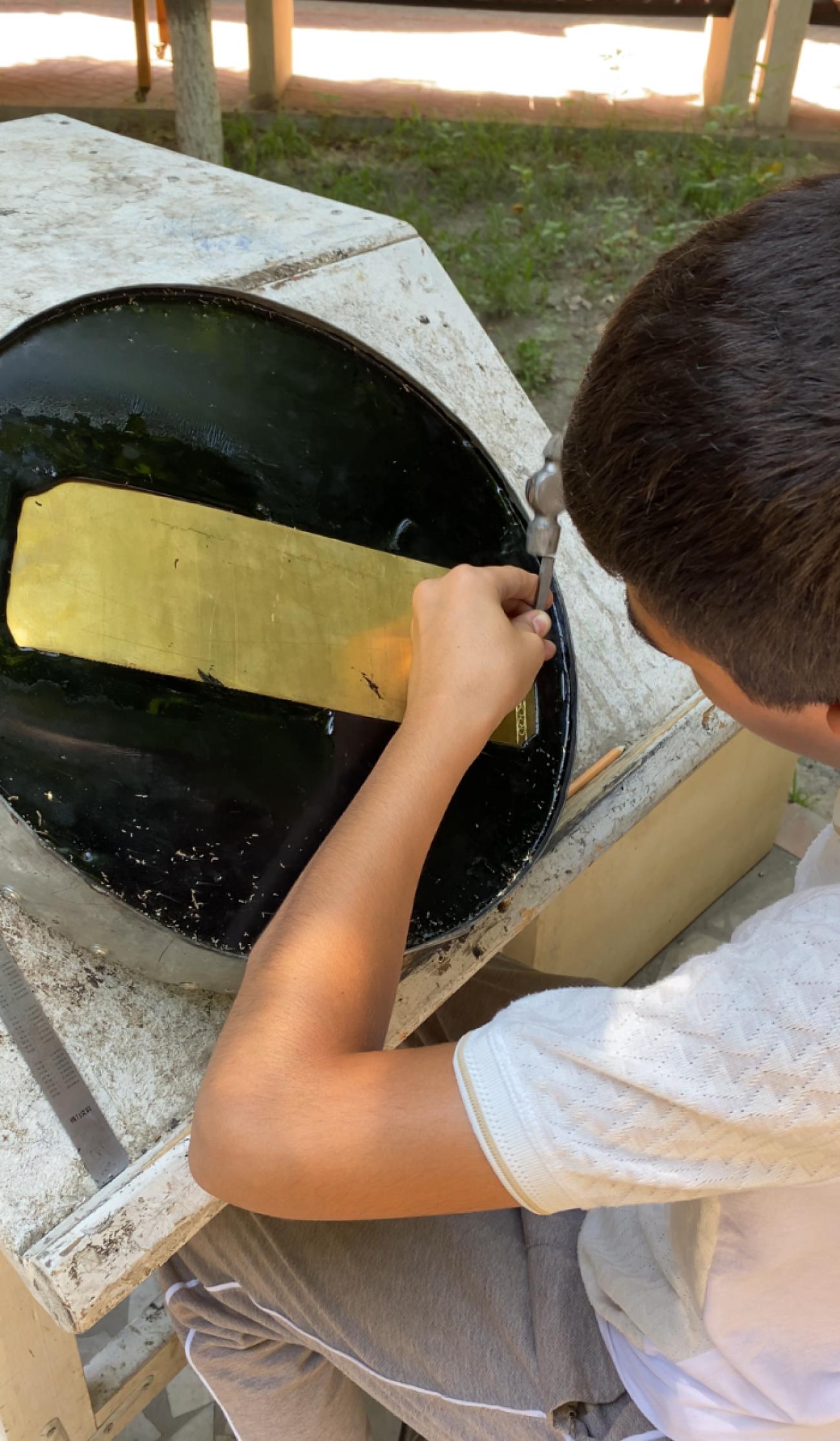
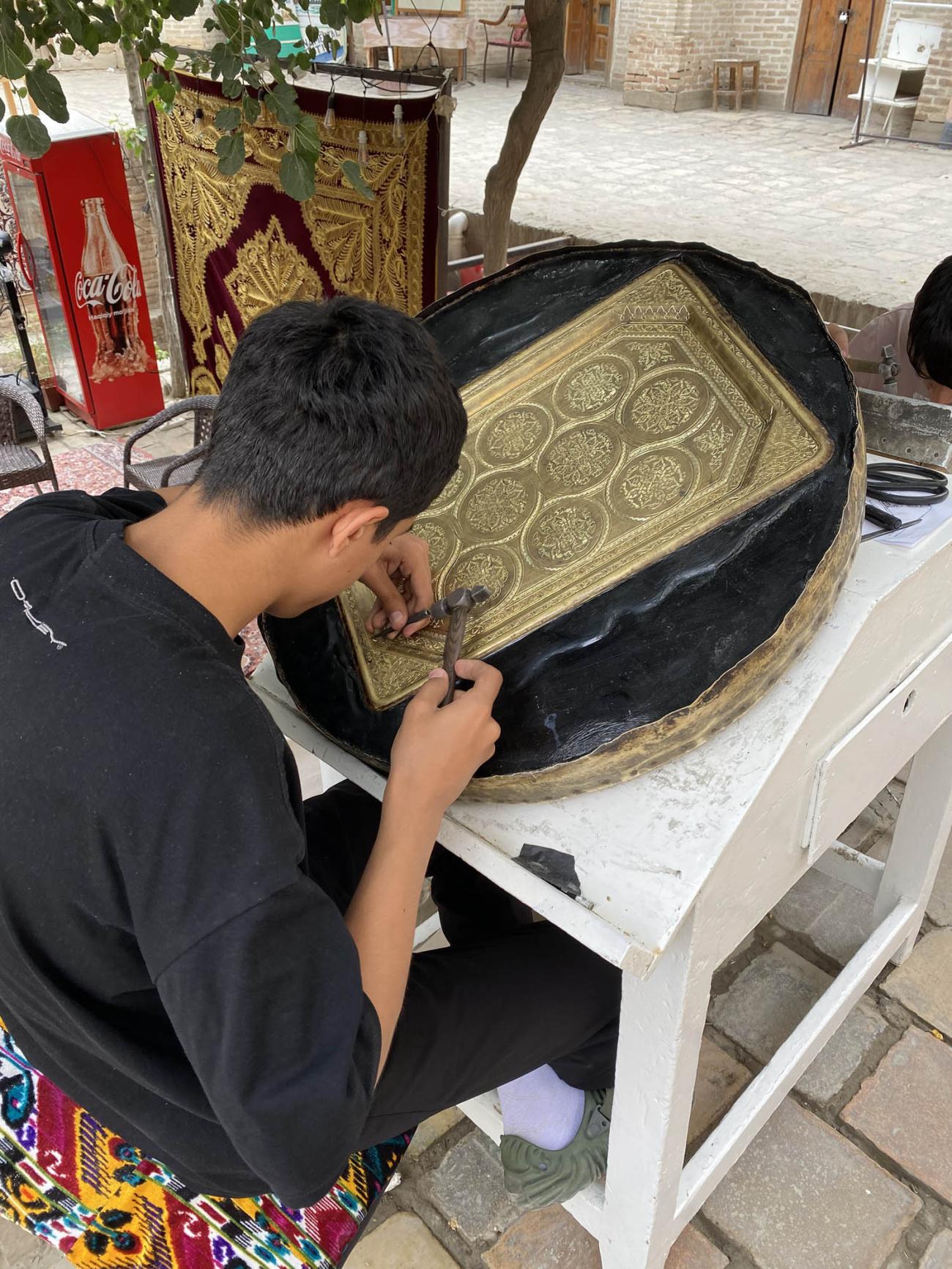
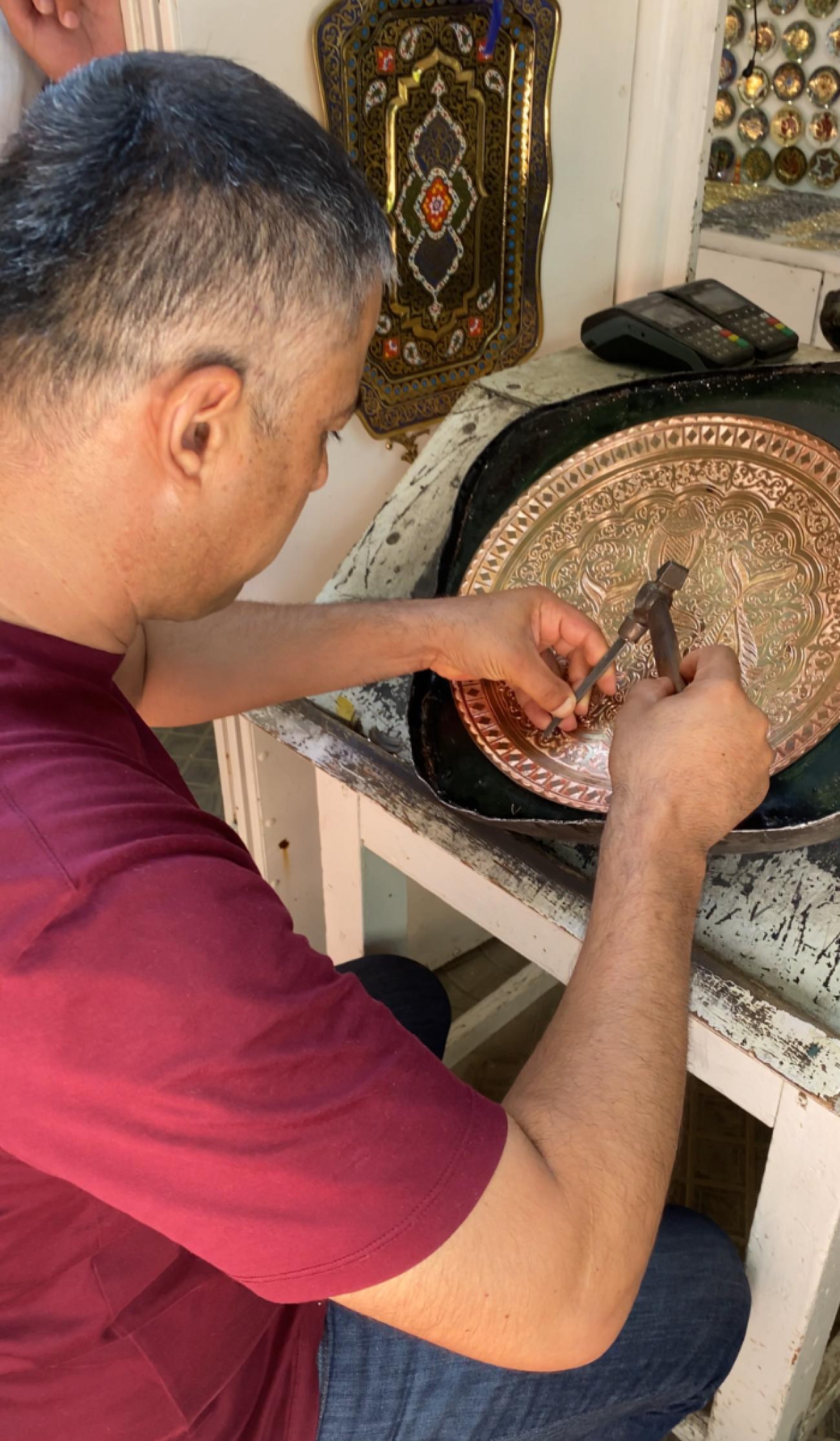
The primary techniques used in Uzbek toreutics include Engraving - Carving designs into metal surfaces. Embossing - Creating raised patterns on the metal by hammering from the reverse side. Chasing - Refining and detailing the embossed designs from the front. Common designs include floral and geometric patterns, animals, and intricate calligraphy. These motifs are not only decorative but also hold cultural and symbolic significance.
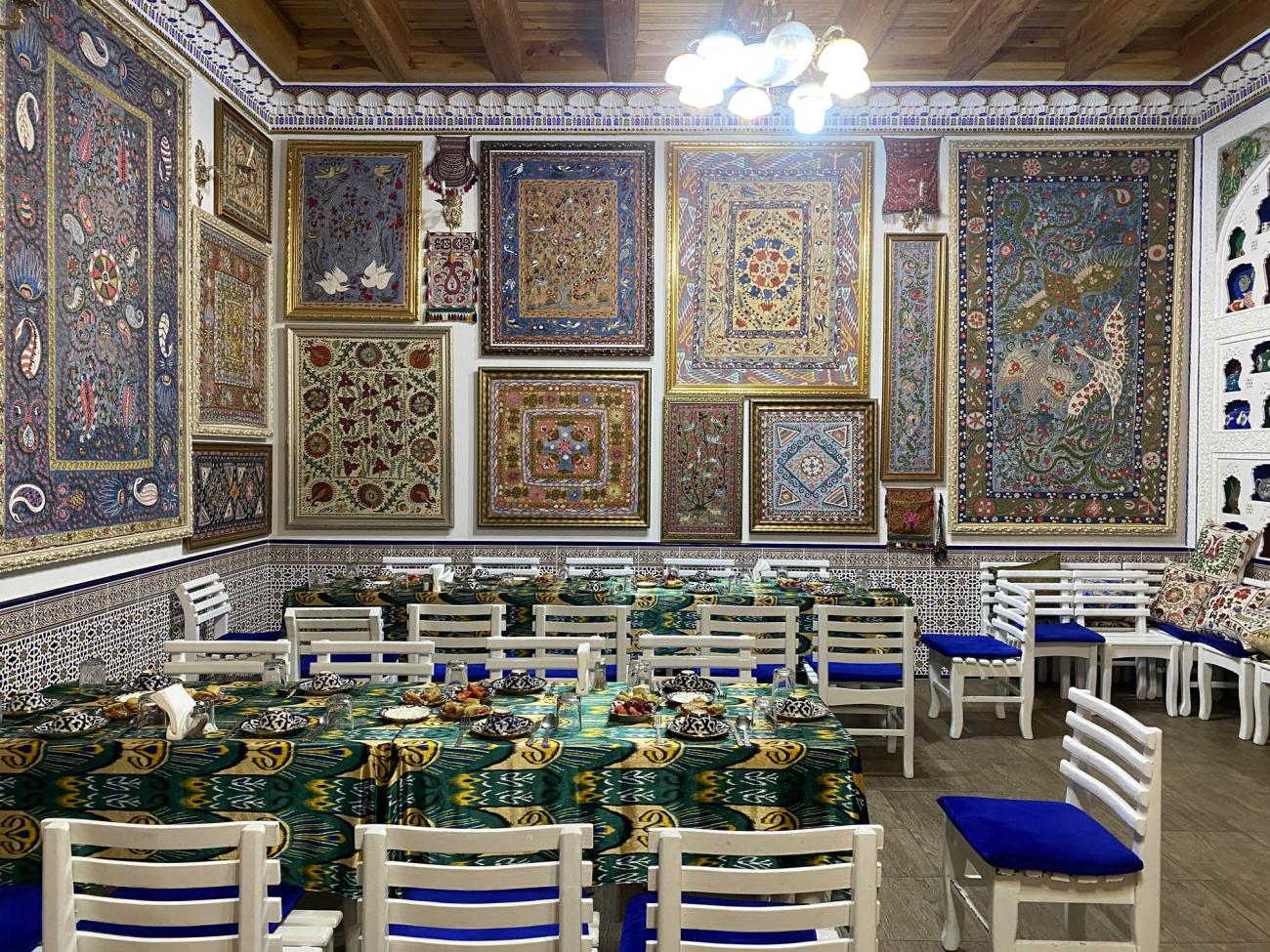
Nestled just a stone's throw away from the Bukhara Artisan Development Center, lies a hidden gem - Rakhimjon Toshev's suzane workshop. Suzane, the epitome of Uzbek craftsmanship, is a blend of intricate floral and mystical patterns, often with stories behind them. This talented family, with a legacy spanning five generations, imbues their suzane with stories and wisdom, passing their artistry from elders to youth. Their beautiful pieces of art are openly displayed all over their house and draped all over their walls, from all generations. There are hundreds of them, each unique in size, colour, and stories.
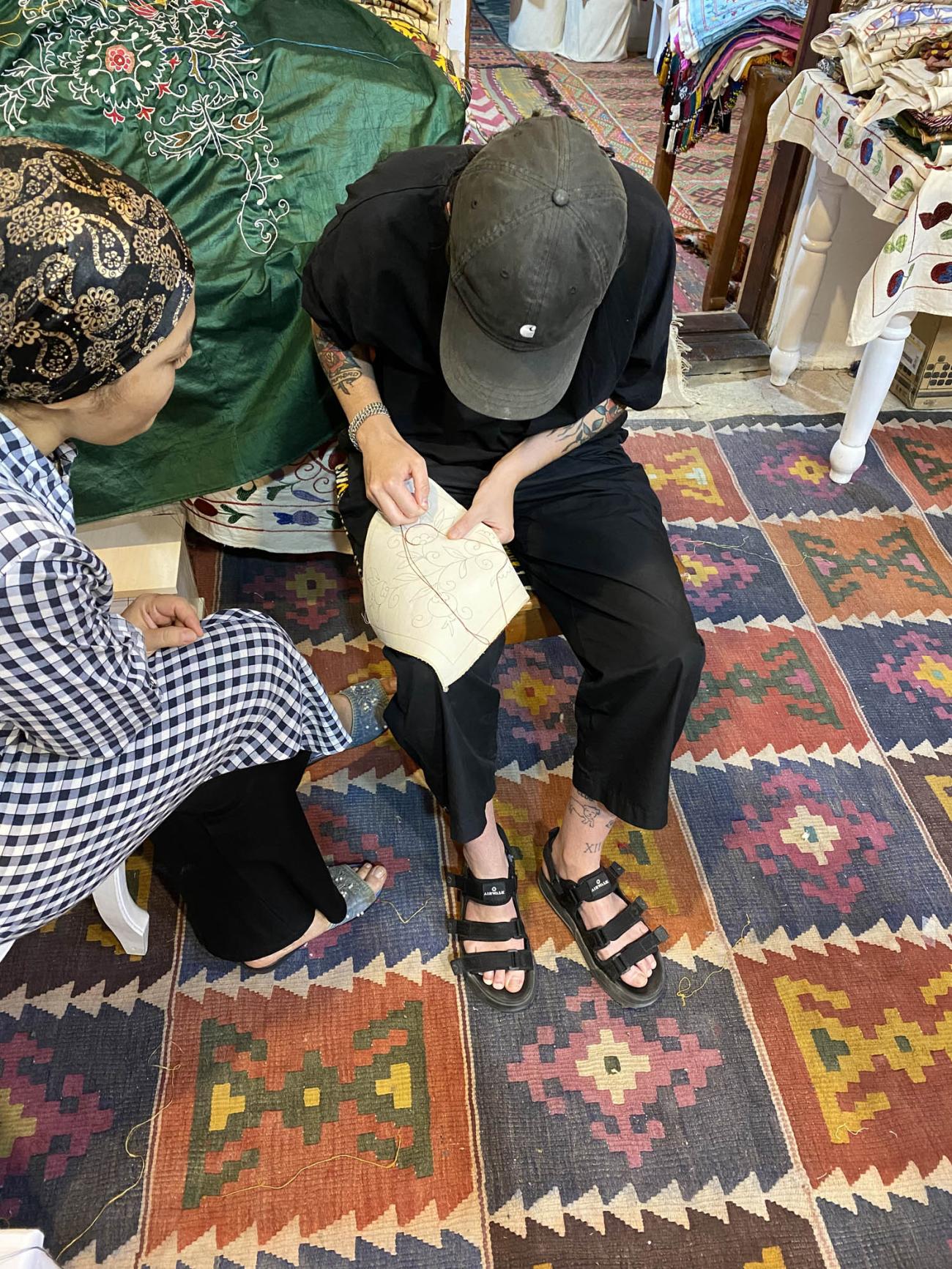
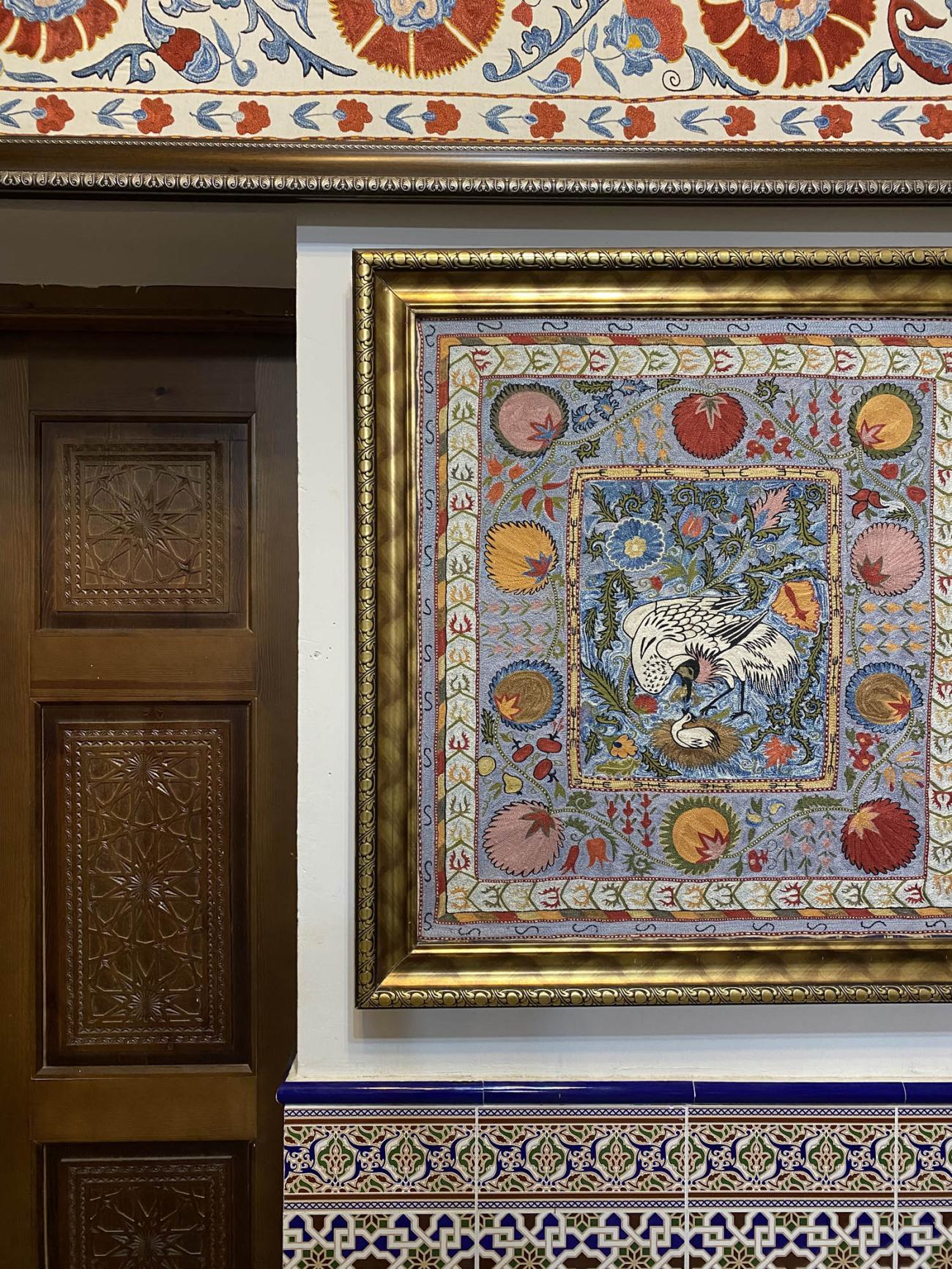
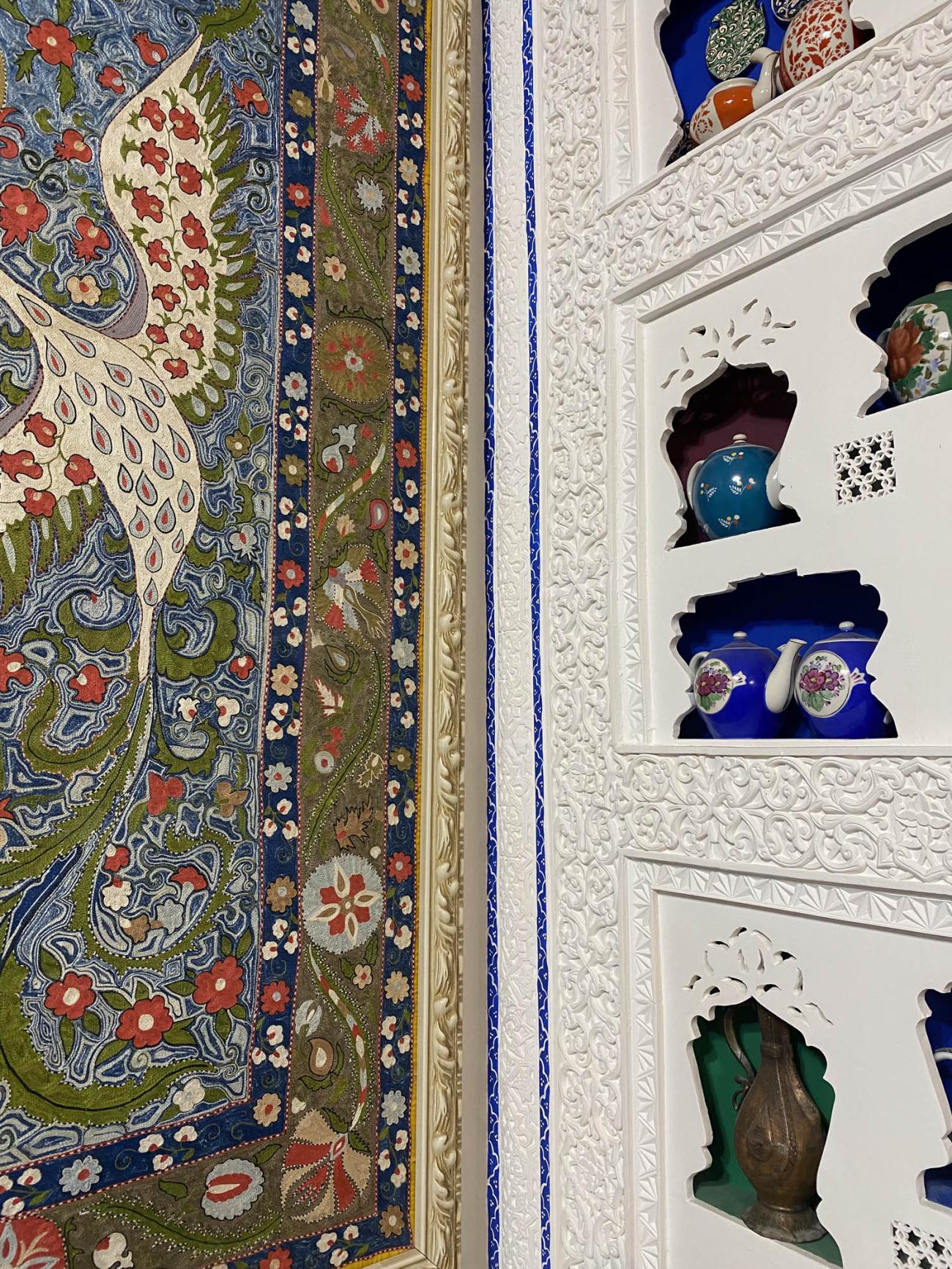
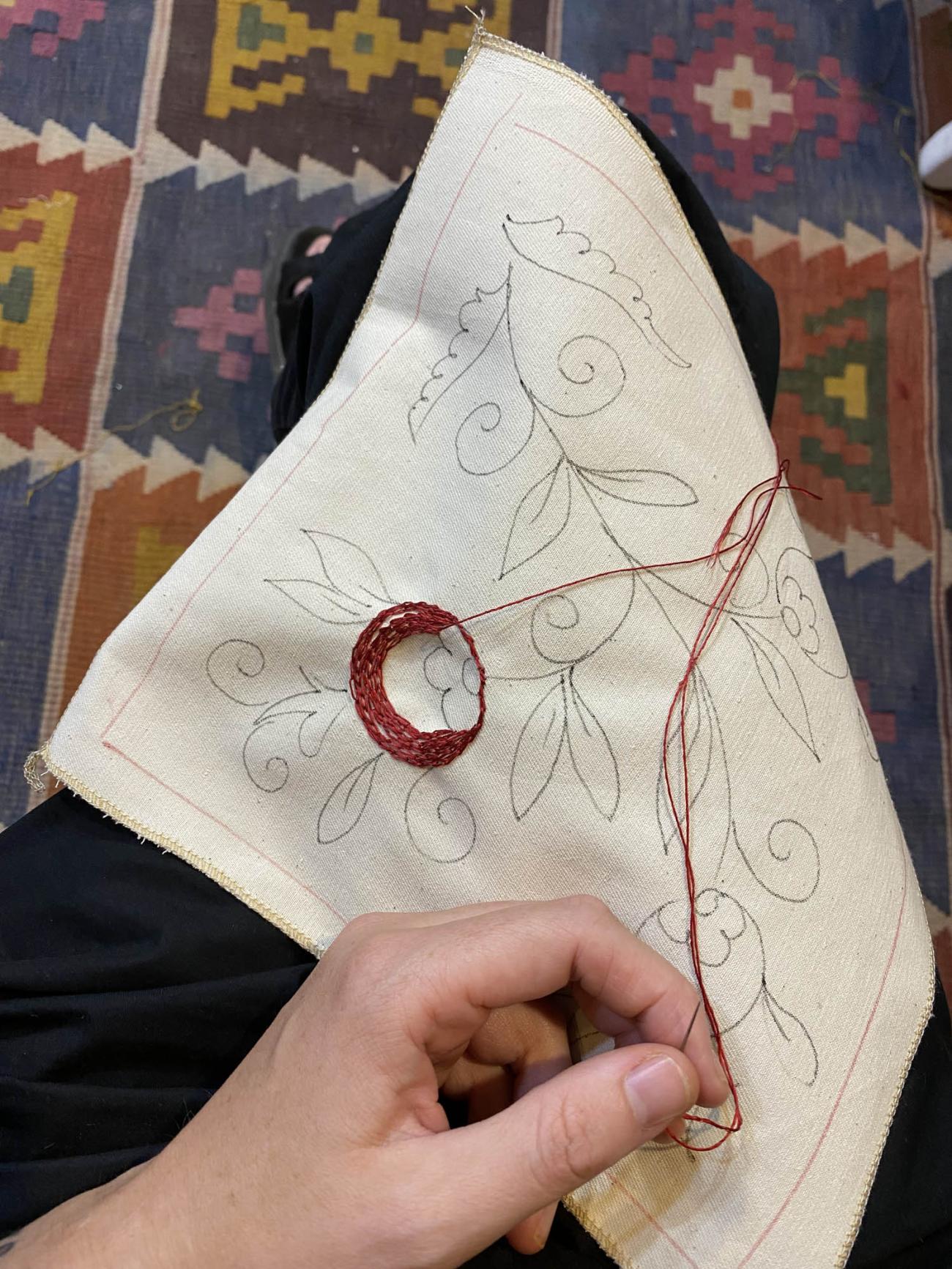
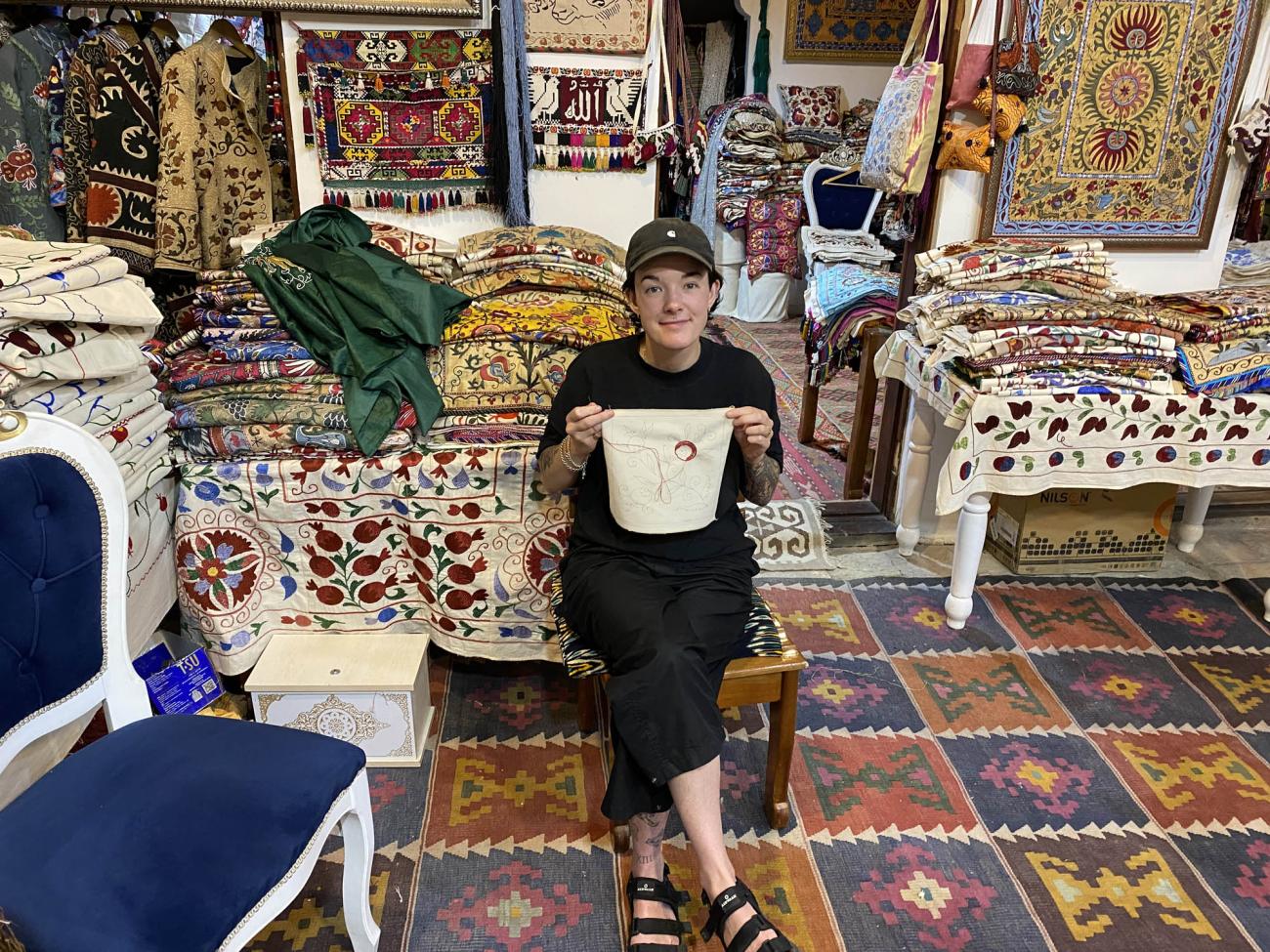
Suzani, derived from the Persian word for needle, is a traditional form of embroidered textile that has been perfected in Bukhara. These hand-embroidered masterpieces are usually created by women and feature intricate floral motifs, vine patterns, and symbolic elements like the sun and moon. Suzani textiles are used as wall hangings, bedspreads, and tablecloths.
Rakhmon Toshev, the family patriarch, is a master and mentor, guiding aspiring artisans and honing their skills. Over the past 15 years, he has trained over 200 individuals. Tourists are welcome to join in master classes, each offering a two-hour immersive experience in this exquisite art form.
What I love most about this story is that the family's suzane embroidery began merely as a hobby. Rakhmon, who worked as a salesman in a grocery store, would spend quiet hours sewing suzane, an art his mother taught him. His handiwork caught the eye of a British tourist one day and they insisted on purchasing it. Surprised and unsure of its value, Rakhmon allowed them to pay what they felt it was worth. This unexpected income not only aided in household expenses and his son's education, but it also illuminated his path, guiding him to his life's calling.
The crafts of Bukhara are more than just products; they are a vibrant testament to the city's rich cultural heritage and enduring artistic traditions. From the intricate patterns of suzane embroidery and the delicate strokes of miniature paintings to the masterful metalwork and evocative ceramics, each craft tells a story of generations of skill, creativity, and dedication. Whether you are a collector, a traveller, or simply an admirer, the artisanal treasures of Bukhara offer a glimpse into a world where art and heritage intertwine. Each piece of art reflects the heart and soul of the Uzbek people.
